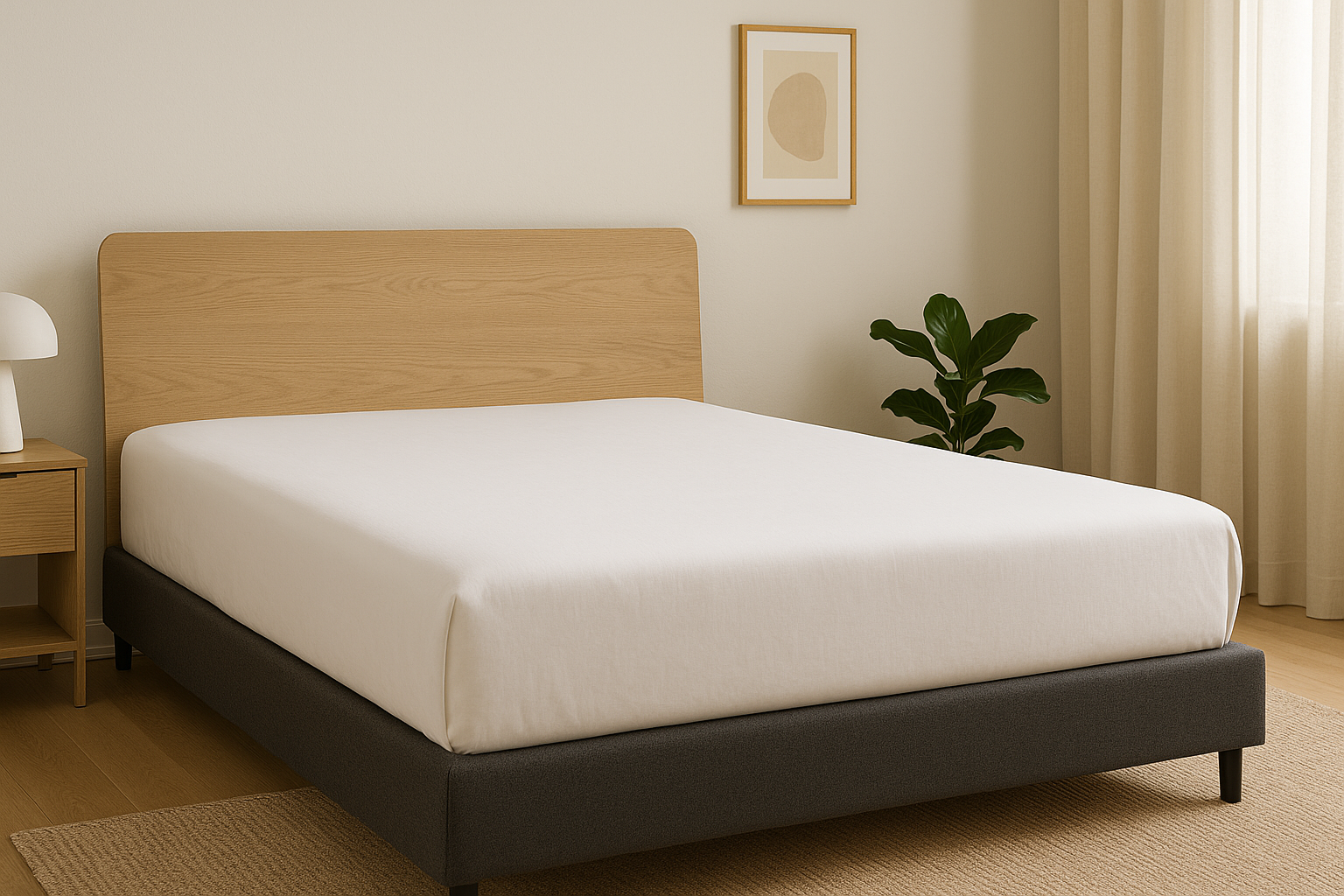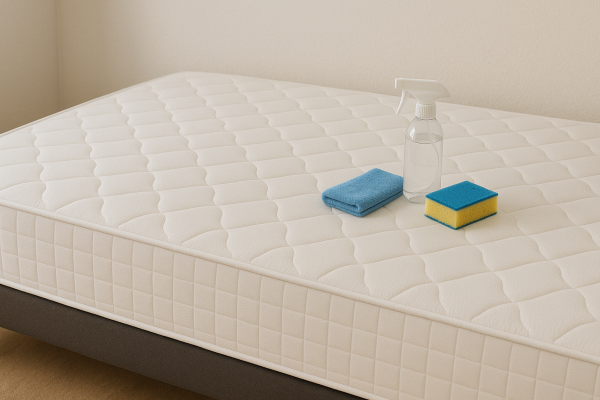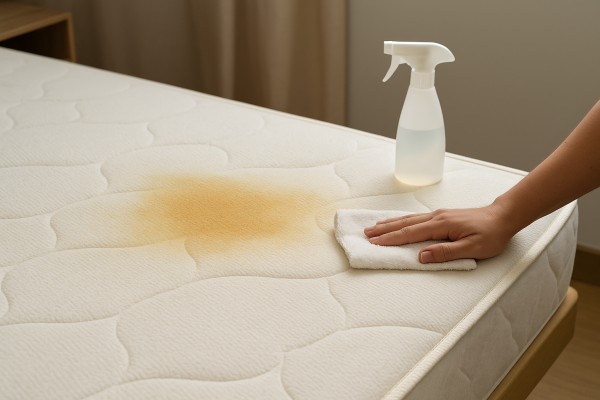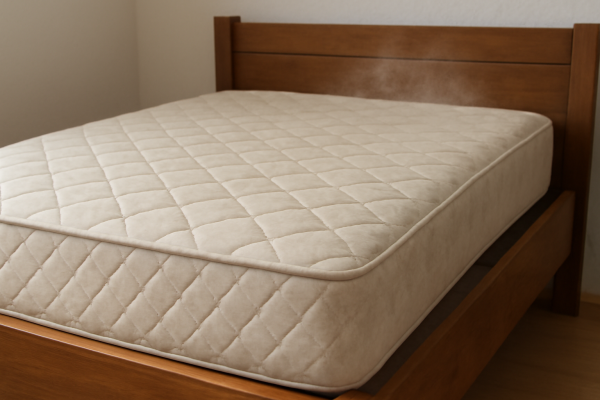Tossing and turning on a mattress that feels more like quicksand than a supportive sleep surface? You’re not alone. A too-soft mattress can leave you waking up with aches, pains, and the feeling that you’ve wrestled with your bed all night rather than getting restorative sleep.
The good news? You don’t necessarily need to fork out for a brand-new mattress straight away. There are several practical ways to firm up your existing mattress, from quick DIY fixes you can try tonight to more permanent solutions that’ll transform your sleep quality for years to come.
Whether you’re dealing with a memory foam mattress that’s lost its bounce, an older innerspring that’s developed soft spots, or you’ve simply realised your sleep style needs more support, this guide will walk you through proven methods to make your mattress firmer. We’ll cover everything from budget-friendly hacks to when it’s time to consider an upgrade.
Why Mattress Firmness Actually Matters for Your Sleep
Before diving into the how-to, let’s talk about why getting the right firmness level is crucial for quality sleep. Your mattress firmness directly impacts three key areas: spinal alignment, pressure point relief, and sleep quality.
When your mattress is too soft, your body can sink in unevenly, causing your spine to curve unnaturally. This misalignment often leads to morning stiffness, back pain, and restless sleep. According to sleep experts, back sleepers and stomach sleepers typically benefit most from firmer surfaces, as they help maintain the natural curve of the spine throughout the night.
Heavier individuals (over 90kg) also tend to find firmer mattresses more comfortable, as they provide better support and prevent excessive sinking. Side sleepers can often handle slightly softer surfaces, but even they need adequate support to prevent pressure points from developing at the hips and shoulders.
The sweet spot? A mattress that supports your body’s natural alignment while still providing enough give for comfort. If you’re waking up feeling like you’ve been sleeping in a hammock, it’s time to add some firmness to your sleep setup.
How to Make Your Mattress Firmer: 7 Effective Methods
1. Add a Firm Mattress Topper
How it works: A firm mattress topper sits on top of your existing mattress, providing an additional layer of support that can dramatically change how your bed feels.
Best materials for firmness:
- Latex toppers: Natural latex offers excellent bounce and responsiveness while maintaining firmness over time
- High-density foam: Provides consistent support without the sinking feeling of memory foam
- Firm memory foam: Look for higher-density options (4+ pounds per cubic foot) for better support
Steps to implement:
- Measure your mattress dimensions accurately
- Choose a topper between 5-10cm thick for noticeable firmness increase
- Look for toppers with a firmness rating of 7-9 out of 10
- Secure with fitted sheets or topper straps to prevent sliding
When it’s most effective: This method works brilliantly for mattresses that are moderately soft but still structurally sound. It’s particularly good for memory foam mattresses that have become too plush over time.
Pros: Relatively affordable, easily removable, can extend mattress life
Cons: Adds height to your bed, may require new fitted sheets, quality toppers can be pricey
2. Install a Plywood Board Underneath
How it works: Placing a sheet of plywood between your mattress and bed base creates a solid, unyielding foundation that prevents sagging and adds overall firmness.
What you’ll need:
- 12-19mm thick plywood (marine ply works well for durability)
- Sandpaper to smooth any rough edges
- Measuring tape
Steps to implement:
- Measure your mattress base dimensions
- Purchase plywood cut to size (most hardware stores will cut to your specifications)
- Sand any rough edges to prevent snagging
- Place directly on top of your existing base, under the mattress
- Ensure the board sits flush and doesn’t create uneven surfaces
When it’s most effective: Perfect for older box springs that have lost their support, slatted bases with too much give, or platform beds with insufficient support.
Pros: Very affordable, immediate results, long-lasting solution
Cons: Can make the bed feel quite firm (possibly too firm for some), adds weight, may affect mattress warranty
3. Flip or Rotate Your Mattress
How it works: Many mattresses develop soft spots or impressions over time. Flipping or rotating redistributes wear and can reveal firmer, less-used areas.
Steps to implement:
- Check if your mattress is designed to be flipped (look for identical surfaces on both sides)
- If flippable, turn it over completely every 3-6 months
- If not flippable, rotate it 180 degrees head-to-foot every 2-3 months
- Mark your calendar to maintain regular rotation schedule
When it’s most effective: Works best with traditional innerspring mattresses or double-sided foam mattresses. Most effective on mattresses less than 5 years old.
Pros: Completely free, can extend mattress life, may reveal like-new firmness
Cons: Not all mattresses can be flipped, temporary solution if underlying support issues exist
4. Adjust Your Bed Base or Slats
How it works: Loose, widely spaced, or sagging slats can make even a firm mattress feel soft by allowing excessive give in the foundation.
Steps to improve slat support:
- Tighten loose slats: Check all connections and tighten screws or bolts
- Add more slats: Reduce spacing to 7-10cm apart for better support
- Replace worn slats: Swap out any cracked or bowed slats with new ones
- Add centre support: Install a centre beam for beds wider than double size
When it’s most effective: Essential for slatted bed frames, particularly effective if you notice your mattress sagging between slats.
Pros: Addresses root cause of softness, improves mattress longevity, relatively inexpensive Cons: Requires some DIY skills, may need to purchase additional materials
5. Control Room Temperature (For Memory Foam)
How it works: Memory foam becomes softer in warm conditions and firmer in cooler temperatures. By managing your bedroom climate, you can influence your mattress firmness.
Practical temperature control tips:
- Keep bedroom between 16-19°C for firmer feel
- Use air conditioning or fans during warmer months
- Open windows for natural cooling (when outside temperature permits)
- Consider cooling mattress protectors or toppers
- Avoid electric blankets or heated mattress pads
When it’s most effective: Most noticeable with pure memory foam mattresses or those with significant memory foam layers.
Pros: No additional purchases required, can improve sleep quality in other ways
Cons: Limited effectiveness, may not be comfortable for all sleepers, seasonal variations
6. Remove Excess Moisture
How it works: Humidity and moisture can soften certain mattress materials, particularly natural fibres and some foams. Drying out your mattress can restore some firmness.
Steps to reduce moisture:
- Strip all bedding and allow mattress to air dry
- Place in direct sunlight if possible (balcony, outdoor area)
- Use a dehumidifier in the bedroom
- Ensure proper ventilation around the bed
- Consider moisture-wicking mattress protectors for ongoing protection
When it’s most effective: Particularly useful in humid climates or if you notice your mattress feels softer during humid seasons.
Pros: Can restore original firmness, improves mattress hygiene, prevents mould growth Cons: Time-consuming process, may not be practical in all living situations
7. Use a Minimal-Cushioning Mattress Protector
How it works: Switching from a plush, quilted mattress protector to a thin, firm one can slightly increase the overall firmness of your sleep surface.
What to look for:
- Thin, non-quilted protectors
- Waterproof options without thick padding
- Bamboo or cotton protectors with minimal cushioning
- Avoid pillow-top style protectors
When it’s most effective: Best as a complementary method alongside other firmness-increasing techniques.
Pros: Protects mattress while adding firmness, easy to implement, washable
Cons: Minimal impact on overall firmness, may need to be combined with other methods
Temporary Solutions for Immediate Relief
Need a firmer surface tonight while you plan a more permanent solution? Try these quick fixes:
- Layer a thin blanket or yoga mat: Place a folded blanket or yoga mat under your fitted sheet for immediate firmness. This works particularly well for guest beds or temporary situations.
- Sleep in the centre: If your mattress has developed soft spots on the sides, sleeping in the centre can provide firmer support while you implement other solutions.
- Adjust your sleep position: Sometimes a simple pillow adjustment can provide better spinal alignment on a soft mattress. Try a firmer pillow under your knees (for back sleepers) or between your legs (for side sleepers).
Onebed’s Mattress Range: The Smart Long-Term Solution
While DIY methods can certainly help, there’s something to be said for a mattress designed with adjustability in mind from the start. This is where Onebed’s innovative approach to mattress design really shines.
Onebed has built its reputation on solving exactly this problem – the frustration of being stuck with the wrong firmness level. Their flagship models, including the Onebed Original Gen3, Onebed X 12” and Onebed Modular 12” feature a unique adjustable firmness system that lets you customise your comfort without any external modifications.
Here’s how it works: you can simply unzip the mattress cover and rearrange the internal foam layers to switch between medium, medium-firm, and firm settings. No toppers, no plywood boards, no guesswork – just the ability to fine-tune your mattress firmness whenever your needs change.
The materials themselves are chosen for optimal support and durability. The latex foam layers provide natural bounce and responsiveness, while the high-resilience base foam ensures long-lasting support that won’t develop soft spots over time. For those dealing with back pain or needing orthopedic-level support, this combination delivers the consistent firmness that promotes proper spinal alignment.
What makes this particularly smart for couples is that the Onebed Modular 12” offers dual-zone firmness – each side can be adjusted independently. No more compromising on comfort or trying to find a middle ground that doesn’t quite work for either partner.
Rather than repeatedly modifying an ageing mattress with various add-ons, investing in a mattress with built-in adjustability gives you control over your sleep setup from day one. Plus, with Onebed’s 125-night trial period, you can test the firmness options risk-free to find your perfect match.
When to Replace Your Mattress Instead
Sometimes, no amount of DIY fixes can salvage a mattress that’s reached the end of its useful life. Here are the clear signs it’s time to invest in a replacement rather than continue with temporary solutions:
- Visible sagging or indentations: If your mattress has permanent indentations deeper than 2.5cm, or visible sagging that doesn’t bounce back, the internal structure has likely failed beyond repair.
- Age-related wear: Most mattresses need replacing after 7-10 years, regardless of how they feel. Internal materials break down over time, losing their ability to provide proper support.
- Persistent pain despite changes: If you’re still waking up with back, neck, or hip pain after trying multiple firmness-increasing methods, your mattress may not be providing the support your body needs.
- Hygiene concerns: Old mattresses can harbour dust mites, allergens, and odours that affect sleep quality and health. If deep cleaning doesn’t resolve these issues, replacement is the healthier option.
- Partner disturbance: If you can feel every movement your partner makes, or if you’re both rolling toward the centre of the bed, the mattress has lost its structural integrity.
- Multiple failed attempts: If you’ve tried several of the methods above without success, or if the improvements don’t last, it’s more cost-effective to invest in a quality mattress designed for your firmness preferences.
What If Your Mattress Becomes Too Firm?
Found that perfect firmness level but worried you might overshoot? Here’s how to make a mattress softer if you need to dial back the firmness.
Add a plush mattress topper made from memory foam or down alternative, increase room temperature (for memory foam mattresses), or use a quilted mattress protector for subtle softening. The beauty of most firmness-increasing methods is that they’re reversible – you can remove toppers, take out plywood boards, or adjust slats as needed.
Frequently Asked Questions
Can you make a soft mattress firm again?
Yes, in most cases you can significantly increase mattress firmness using the methods outlined above. The most effective approaches are adding a firm topper, installing plywood support, or adjusting your bed base. However, if the mattress has structural damage or is very old, replacement might be more practical.
What’s the best firm topper for a soft mattress?
Latex toppers generally provide the best combination of firmness and durability. Look for natural latex with a firmness rating of 7-9 out of 10, and choose a thickness of 5-7cm for noticeable improvement without making the bed too high.
Will plywood damage my mattress?
When properly installed with smooth edges, plywood won’t damage your mattress. However, it may affect your warranty if the manufacturer specifies certain foundation requirements. Always check your warranty terms before making modifications.
How do I know if my mattress is too soft?
Key signs include waking up with back pain, feeling like you’re sleeping “in” rather than “on” the mattress, difficulty getting out of bed, or noticing that you and your partner roll toward each other during the night.
How can I make my mattress firmer without buying anything?
Try flipping or rotating your mattress, removing excess bedding layers, lowering room temperature (for memory foam), ensuring proper ventilation to reduce moisture, or sleeping in different areas of the bed to avoid worn spots.
Ready to Transform Your Sleep?
A too-soft mattress doesn’t have to mean months of poor sleep while you save for a replacement. From simple adjustments like temperature control and mattress rotation to more substantial changes like adding firm toppers or plywood support, there are solutions for every budget and situation.
The key is to start with the least invasive methods first – you might be surprised how much difference proper slat spacing or a quality firm topper can make. For longer-term comfort and the ultimate in firmness control, consider mattresses designed with adjustability in mind. If you’re looking for the best firm mattress in Australia, it’s worth exploring options built to provide both support and comfort over time.
Remember, good sleep is an investment in your health, productivity, and overall quality of life. Whether you choose a DIY approach or decide it’s time for an upgrade, taking action to improve your mattress firmness is a step toward better sleep and better mornings. To help you make the right decision, check out this guide on how to choose a mattress that fits your sleep style and firmness preferences.
If your mattress is still too soft after trying these methods, or if you’re ready to skip the trial-and-error phase entirely, explore mattresses designed with customisable firmness from the start. Your back (and your sleep quality) will thank you for it.



























